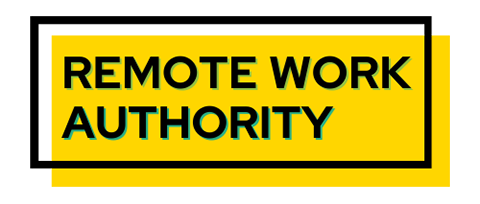Managers often underestimate the effectiveness of remote work as they can’t see them to eyeball their effectiveness. The only way to develop genuine productivity numbers is by implementing a plan for productivity management, communicating it to employees, and accurately measuring the results.
How productive are employees who work outside the office? Study after study shows that many workers are more productive when they work offsite, yet managers doubt the statistics. They judge remote and hybrid workers as less productive than onsite staff and hold back on promoting them. The only way to develop genuine productivity numbers is by implementing a plan for productivity management and accurately measuring the results.
According to Gleb Tsipursky, the problem is that managers are not trained to assess offsite workers properly. What they are familiar with is “management by walking around,” to observe workers at their desks or cubicles and in their office to monitor and analyze phone metrics. Remote work will never be properly assessed until managers learn and understand new techniques to manage productivity.

Remote Work Assessment Failure 1: No Promotions For You
Two recent studies illustrate the problem. Nicholas Bloom and other scholars at Stanford University studied the management practices of a call center company with over 16,000 employees. While senior management wanted to experiment with work-from-home employees, they feared that employees would not work efficiently without direct supervision. Employees wanted to work from home to save the commute.
The workforce was split into two groups: one that worked from the office and one that worked from home. Both groups were judged based on the same productivity metrics: minutes worked per shift, calls per minute, and manager assessment of performance, along with retention and satisfaction metrics.
After nine months, the work-from-home (WFH) group showed the following results:
- 13% performance increase (9% due to working more minutes per shift with fewer breaks and sick days, 4% from more calls per minute due to the working environment
- Attrition rate 17%
The two groups had similar conversion rates of calls to orders
The onsite group showed no increase in performance yet had a 35% attrition rate.
Considering the growth, managers should have promoted WFH home workers faster, but the opposite proved true. The onsite workers were, on the whole, less productive, yet were promoted more quickly. Not being promoted encouraged some workers to return to the office rather than miss out on promotion opportunities.
Prior to this experiment, managers received no training for managing a remote workforce. Most managers lacked trust in their employees resorted to an “out of sight, out of mind” attitude and overlooked the better numbers to remove or fail to advance workers.

Remote Work Assessment Failure 2: Proximity Bias
Nicholas Bloom ran another study focused on hybrid work at a company with 35,000 employees. Those with odd-numbered birthdays were offered flexible work, while those with even-numbered birthdays needed to report to the office Monday through Friday. Their performance was based on lines of code written by programmers and manager assessment of performance. The study was also concerned with retention, engagement, and sick days to show any differences between the two models.
The hybrid group showed a 4.4% increase in lines of code written and a 33% increase in retention, fewer sick days, and job satisfaction. Unfortunately, managers were less satisfied, so hybrid workers did not see the promotions and pay raises they expected as a result of the better numbers.
Bloom and his group concluded that managers were biased against remote work, which prevented them from seeing measurable increases. They had “proximity bias,” meaning that they looked more favorably at work dynamics they could observe in person,
The failure to properly train managers of hybrid and remote employees is widespread, even in companies such as Amazon, Meta, and others. Managers quickly complained to executives that remote work wasn’t working, which caused leadership to reverse flexible work policies.
How To Evaluate Remote And Hybrid Workers
What’s necessary to ensure proper evaluation of remote workers is setting SMART goals that are specific, measurable, achievable, relevant, and time-bound. The specifics may vary depending on the type of task.
- Short-term tactical goals, such as the number of calls, customer visits, or claims processed
- Process goals, such as maintaining readings on customer feedback surveys
- Project goals, such as completing initial research for a report and producing an outline
- Collaborative tasks, such as mentoring a colleague or attending a team meeting
SMART goal setting, developed by University of California researchers, is a type of performance management that sets clear goals for performance expectations. In situations where there is less face-to-face contact, supervisors and employees get multiple chances to communicate and evaluate the work situation, having pre-established criteria is particularly valuable.
Performance management measures productivity through the assessment of specific, measurable tasks. Management must tie their expectations to particular activities employees must do to measure up and clearly communicate them to employees via frequent performance evaluations.

While the way companies carry out performance management varies by company, the approach has four main goals.
- Employee development – Employees understand what they must do to successfully perform their jobs, advance in their positions, and achieve personal growth.
- Employee engagement – Employees become committed to pursuing the goals set for them. They tend to be more creative, productive, and committed to their work.
- Clarifying expectations – Employers should make sure that employees know how to achieve the goals they set out.
- Monitoring and evaluating performance – After familiarizing employees with evaluation tools, employers should activate them and keep employees informed of their progress with ongoing evaluations.
- Rewarding and recognizing good performance – When employees meet and exceed goals, employers should thank them, praise them, and reward them.
All employees benefit from employing productivity management techniques. Even when employees are close at hand, having a system like this adds objectivity and reduces many personal biases.

Evaluation Tools For Productivity Management
In this digital age, employers have many software choices to help them measure progress toward goals and projectivity objectively, fairly, thoroughly, and regularly. Temaflect.com offers a list of the top performance management software of 2023.
The choices they enumerate use a template that presents employees with key information on a regular basis. The price varies, and each software has its strong points. Here are a few examples of the top picks:
| Tool name | Best for | Price |
| Teamflect | Microsoft Teams integration | $5 per user/month |
| BambooHR | HR management | $5.25 per user/month |
| Reviewsnap | Tracking SMART goals | $2849 per year |
| Trakstar | Automated feedback cycles | $249 per month |
| Performyard | Reporting | $4 per user/month |
While employees view some software that measures employee performance as intrusive spyware, these robust performance trackers aim to develop meaningful data.
Most performance software is based on AI to deliver personalized development plans, continuous monitoring, and feedback that enables management to make data-driven decisions that lead to conversations with employees about performance.
No matter whether employers use software or not, the important thing is that they need to have some measurable criteria that employees know about and understand. Communication is the key to productivity.


